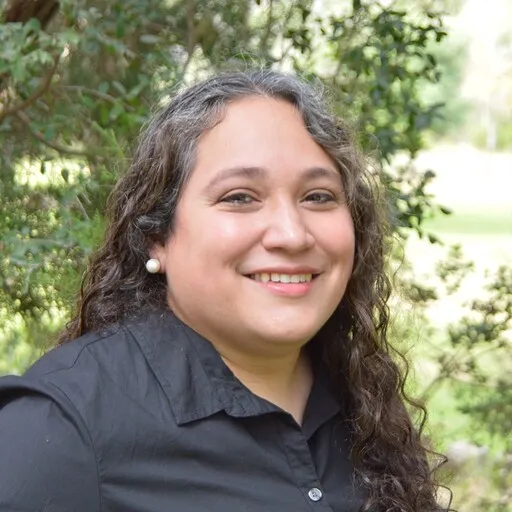In a world full of digital noise, face-to-face connection has never been more important.
If you’re looking for some strategies to give your brand a more human touch, connect with your audience, and differentiate yourself in a sea of websites, mobile apps, and video, field marketing might be just the breath of fresh air you’re looking for.
So, what is field marketing?
And why is it a potential game-changer for your brand?
Strap in, friends, because today’s blog is taking you through the essentials of field marketing so you can see if it’s the game-changing strategy that your brand is looking for!
What is Field Marketing?

Field marketing (also known as experiential marketing or event marketing) is a dynamic and customer-focused marketing strategy.
Just like those vacuum cleaner salesmen of the 50s and 60s, field marketing involves taking your products, services, or brand experiences directly to your target audience. While methods have evolved a bit since the days of letting strangers scatter dirt on your clean kitchen floors, the essence remains the same.
The goal is to engage your customers in person to promote, show the benefits of, and sell your product or service.
Field Marketing vs. Traditional Marketing
While field marketing is, of course, a form of marketing, it differs from traditional marketing in a few ways.
To begin with, the channels are very different. Traditional marketing relies on mass media like TV, radio, print, digital, and online efforts to reach a broad audience. It’s a one-way street usually, with potential customers having the option of digging for more or simply continuing walking or scrolling away.
Field marketing, on the other hand, is face-to-face. It’s a two-way street here, directly engaging with prospects at events, promotions, or product demonstrations, answering questions in real time, and having a conversation. It’s a more personal and human approach.
What Does a Field Marketer Do Exactly?
Good question!
A field marketer is responsible for executing marketing strategies in the field and directly interacting with potential customers. They need to be a friendly, dynamic person who is knowledgeable in their brand’s offerings and features.
Here is a bit more about what a field marketer (or field marketing team) is in charge of:
- While some events are already planned out, often a field marketer has to organize their own events, like trade shows, conferences, product launches, local community gatherings, etc. They’ll handle all of the logistics of their event as well, including setting up booths and making sure things are laid out to provide a positive experience for everything they interact with.
- They must be able to directly engage with customers and run product demonstrations, answering any questions that might come up from even the most cynical customers.
- Beyond the immediate face-to-face interactions, field marketers also play an important role in gathering research. They collect customer feedback, analyze reactions, and identify any possible consumer trends to refine future strategies.
- Field marketers are also a bridge between sales and marketing teams. They collaborate closely with their organization’s sales teams to make sure their field marketing efforts are aligned with their brand’s goals and use their insight to help refine sales strategies.
- A field marketer also acts as a brand ambassador, representing the values and identity of the company they work for. A good field marker represents with authenticity and friendliness to make positive connections with potential customers.
How to Develop a Field Marketing Strategy for Your Brand
If you’re convinced that implementing a field marketing strategy is just the thing to start boosting awareness and increasing sales, then that’s great!
Here is an 8-step guide to developing a field marketing strategy for your brand!
Step 1. User Personas
The first step to building out any kind of marketing strategy, whether it’s digital marketing, field marketing, or social media, is to build out your user persona.
A user persona, like an ICP, is a detailed fictional representation of a member of your target audience. Be sure to include demographics, preferences, behaviors, pain points, and any points of resistance you think they are likely to have.
Marketing is never a “one size fits all” kind of thing and user persons will help your team to better understand your audience’s pain points, needs, and what exactly they are looking for in a solution.
Knowing this makes it much easier to know where the best kinds of events to meet them will be, as well as guides you in creating the kind of marketing assets and refining the messaging style you’ll need to have to create an effective field marketing campaign.
If you need some assistance in building out user personas, drop us a line! It’s kind of our thing.
Step 2. Competitive Analysis
It’s helpful to know what your competition is up to so you can stay one step ahead.
Start by identifying your key competitors in the field. Take a good look at their marketing strategies for strengths and weaknesses in their approach. Is there something they’re doing well that your brand can also be doing? Perhaps an opportunity they might be missing that you can capitalize on?
Learn all you can about your competitor’s winning and not-so-winning strategies and use these lessons to develop your own field marketing activities.
Step 3. Impactful Marketing Collateral
If you want your field marketing strategies to be successful, you’re also going to need essential marketing collateral.
What exact collateral you’ll use will depend on your brand and what your target audience wants to see, but here are some ideas:
- Brochures and Flyers — Concise and visually appealing, brochures and flyers can highlight key product features, benefits, and promotions. They’re easy to distribute and provide tangible information for potential customers to take home.
- Branded Merchandise — Swag like pens, notepads, or branded merchandise with your company's logo create an instant and tangible connection with your brand and serve as constant reminders of your business!
- Trade Show Booth — Engage potential customers at events with a trade show booth, featuring live product demonstrations. This hands-on experience allows your audience to see the product in action to better understand its value.
- Testimonials and Case Studies — Showcase success stories and positive customer testimonials. This social proof adds credibility to your brand and demonstrates real-world satisfaction with your products or services.
- Visual Displays — Eye-catching visual displays or banners can draw attention to your booth or event space. Use vibrant imagery and concise messaging to communicate your brand's identity and offerings.
- Digital Tablets and Screens — Incorporate technology with tablets or screens to showcase dynamic content, videos, or interactive presentations. This modern approach can captivate the audience and deliver information in an engaging way.
- Samples or Product Samples — Offering product samples or trial versions can provide a firsthand experience for potential customers. This tactic allows them to interact with your product and increases the likelihood of conversion.
- Customer Surveys and Feedback Forms — Collect valuable insights through on-site surveys or feedback forms. This collateral not only engages attendees but also helps in understanding customer needs and preferences.
- Event-Specific Landing Pages — Direct potential customers to a customized landing page created specifically for the event. This online collateral can provide additional information, promotions, and a call-to-action for further engagement.
- QR Codes for Quick Access — Incorporate QR codes on printed materials for quick access to online resources, promotions, or contact information. This seamless transition from physical to digital enhances the overall customer experience.
Remember, the effectiveness of your marketing collateral lies in how well it communicates your brand message. Be sure whatever collateral you use is consistent and tailored to the event, audience, and your overall strategies!
Step 4. Find Your Opportunity

In keeping with the “one size does not fit all” theme, you’ll want to launch multiple field marketing campaigns that appeal to every segment of your target audience.
Here’s where you’ll need to do some research to pinpoint the events, trade shows, conferences, or local events and gatherings that align with those members of your audience and are likely places to find them in the wild.
Assess the potential impact of each event too, considering factors like the audience size, demographics, and its overall relevance to your brand and products, and then pick the ones that work best for your brand and your resources and have the most ROI.
Once you select your events, plan out your presence at each one and determine how you can make the most impact.
It’s a never-ending job so be sure that your team is on constant lookout for opportunities and events for your brand!
Step 5. Keep the Momentum Going
The customer data, leads, and insight you gain at each event is invaluable!
So, once your event is over, don’t sit on that precious info. Act on it!
Keep the conversation alive with a lead follow-up strategy to keep up with any leads you gathered up at each event. This might include personalized phone calls, emails, newsletters, or other targeted content designed to nurture your prospects through your sales funnel and keep your brand top-of-mind. Whatever method you want to use, just be sure to maintain active communication channels with your leads.
And if you have a particular event that was a raging success? Take advantage!
Use that success to promote and build up anticipation for additional activities, showcasing things like positive testimonials and photos on your social media accounts and website to create hype for your next event and encourage an even better turnout!
Step 6. Integrate with CMS
Of course, field marketing is only one branch of your marketing efforts.
You’ll want to integrate your field marketing efforts with a CMS (content management system) to keep all of your efforts organized and in harmony.
A CMS serves as the centralized hub for all of your digital content, allowing you to manage, organize, and optimize your messaging, keeping your in-person engagement seamlessly aligned with your broader content strategies.
Here is a bit on how to integrate your field marketing efforts with a CMS.
- Centralized Content Hub — Establishing a centralized hub within a CMS keeps all field marketing collateral readily available to field marketing managers, marketing and sales teams, and anyone else who needs access.
- Customizable Templates — Develop customizable templates that allow field marketers to personalize content within your brand guidelines. This flexibility helps to keep a consistent brand identity while also accommodating regional audiences.
- Automated Workflows — Implementing automated workflows for approvals and updates enhances the efficiency of your content creation and distribution processes. This systematic approach reduces manual effort and accelerates the pace of your marketing operations!
- Training and Expert Support — Providing comprehensive training and ongoing support to field teams enables them to navigate and effectively use your CMS. This investment in education ensures your teams have access to all available resources.
Step 7. Monitor and Adjust
As with any marketing campaign, be sure that you are keeping an eye on your metrics and KPIs.
This will tell you how successful your field marketing efforts really are! Stay flexible and be prepared to adjust strategies based on real-time data and customer feedback gathered by your field marketing team.
Here are some KPIs to keep your eyes on:
- Lead Generation — Number of leads generated from field marketing activities. This KPI measures the success of your efforts in capturing potential customers during in-person engagements.
- Event Attendance and Engagement — Number of attendees at events and their level of engagement. This KPI indicates the reach and impact of your field marketing events. High attendance and active engagement signify success.
- Brand Awareness — Increase in brand awareness in the targeted geographic area. This KPI assesses how well your field marketing activities contribute to raising awareness about your brand among the local audience.
- Customer Interactions — Number of interactions and conversations with potential customers. This KPI reflects the quality and depth of engagement with your target audience during field marketing events.
- Collateral Distribution — Number of marketing collateral distributed. This KPI evaluates the effectiveness of your messaging and the interest generated by your promotional materials.
- Conversion Rates — Percentage of leads converted into customers. This KPI measures the ultimate success of field marketing in turning potential customers into actual clients.
- Return on Investment (ROI) — Ratio of the revenue generated to the costs incurred for field marketing. This KPI determines the financial success and efficiency of your field marketing campaigns.
- Social Media Impact — Shares, mentions, and engagement related to your field marketing events can gauge the online impact of your field marketing efforts. This KPI measures how effectively your events are resonating with the online audience, providing insights into the reach and amplification of your brand messaging across social media platforms.
- Customer Satisfaction — Customer satisfaction scores or feedback. This KPI assesses how well your field marketing activities align with customer expectations and preferences.
- Geographic Reach — The geographic coverage and penetration of field marketing activities. This KPI evaluates the effectiveness of your strategy in reaching and engaging the intended local audience.
- Data Collection and Insights — Volume and quality of data collected during field marketing activities. This KPI indicates the level of valuable insights gained for future targeting and strategy refinement.
Benefits of Field Marketing

Here are some of the many benefits that field marketing can have on your brand!
- Direct Engagement — Field marketing allows for direct, face-to-face interactions with potential customers, creating a personal connection that is often more memorable than digital interactions.
- Immediate Feedback — Through in-person engagement, marketers can receive immediate feedback, enabling them to gauge customer reactions and preferences in real time.
- Brand Visibility — Field marketing events, whether at trade shows, conferences, or local events, provide an opportunity to increase brand visibility and awareness within specific target markets.
- Product Demonstration — Live demonstrations allow potential customers to experience the product firsthand, helping them better understand its features and benefits.
- Relationship Building — Building relationships is a key strength of field marketing. It allows marketers to establish a rapport with customers, fostering trust and loyalty over time.
- Targeted Local Campaigns — Field marketing enables companies to tailor campaigns to specific local markets, addressing regional preferences and cultural nuances.
- Data Collection — Marketers can gather valuable data and insights by directly interacting with customers, helping refine marketing strategies and improve future campaigns.
- Immediate Conversions — Face-to-face interactions can lead to immediate conversions, as customers are more likely to make a purchase or take a specific action when engaged in person.
- Human Touch — In an increasingly digital world, field marketing provides a human touch to marketing efforts, making brands more relatable and approachable.
- Cost-Effective — Compared to large-scale advertising campaigns, field marketing can be a cost-effective strategy, particularly for small and medium-sized businesses looking to connect with their audience in a meaningful way.
Best Field Marketing Events
Looking for some ideas?
Below are several types of events that have proven effective for field marketing. Remember, it’s important to choose the events that line up with your target audience’s preferences and brand’s marketing goals!
- Trade Shows and Expos — These events gather industry professionals and enthusiasts, providing an excellent platform for product demos, network working, and engaging with potential clients.
- Community Events and Festivals — Local events, fairs, or festivals allow businesses to connect with the community, fostering brand awareness and building relationships with a diverse audience.
- Product Launches — Hosting events specifically for introducing new products allows for direct interaction with customers, enabling them to experience the product firsthand.
- Sponsorship of Sporting Events — Associating with sports events can provide exposure to a wide audience, especially if the event aligns with the brand's target demographic.
- Corporate Conferences — Attending or sponsoring industry conferences offers opportunities to connect with key decision-makers and influencers within a specific sector.
- In-Store Promotions — Setting up promotional booths or displays within retail locations can drive in-store engagement and increase product visibility.
- Roadshows — Taking a product or service on the road to different locations allows for a broad reach and engagement with diverse audiences.
- Pop-Up Shops — Temporary retail spaces or pop-up shops in high-traffic areas offer a unique and immersive brand experience.
- Mobile Tours — Utilizing vehicles to bring the brand directly to the target audience in various locations, offering samples, demonstrations, and engagement.
- Workshops and Seminars — Hosting educational events can position a brand as an industry expert, attracting a highly engaged audience interested in learning more about relevant topics.
<div class="c-blog_comp-cta cc-component-1"><div class="c-blog_comp-cta-left"><div class="c-blog_comp-cta-left-wrap"><img src="https://global-uploads.webflow.com/61cdf3c5e0b8155f19e0105b/6369722e59155470b6840033_Potential-clients.png" loading="lazy" alt="" class="c-blog_comp-cta-left-img"></div></div><div class="c-blog_comp-cta-right"><div class="c-blog_comp-content"><div class="c-text-wrapper cc-mb-32"><div class="c-title-4 cc-bold"><strong>Want to save money without sacrificing the quality?</strong></div></div><div class="c-text-wrapper"><div class="c-text-2">Say goodbye to traditional, expensive agencies and unreliable marketplaces. Say hello to Designity.<br></div></div></div><div class="c-blog_comp-wrapper"><a href="/pricing" target="_blank" class="c-button cc-primary cc-inverted w-button"><strong>Get Your 2-Week Trial</strong></a></div></div></div>
Beyond Field Marketing
In order to create a successful field marketing campaign, it’s going to take more than eager and motivated field marketers.
So, if your brand has the team but lacks the compelling collateral, the user persona strategies, and the ability to closely monitor your competitors, then we have a suggestion for you.
Why not partner with Designity?
Though Designity is a remote platform, it might be exactly what your field marketing campaign needs.
Our talent pool is made up of the top 3% of US-based creative talent, including the copywriters, graphic designers, web developers, animators, social media experts, and more you need to create tailored and compelling marketing assets for your team.
Since each account has its own dedicated Creative Director, acquiring this marketing gold is easier than ever too. Your CD will handle everything from the sourcing of creative talent to building out timelines and ensuring all of your assets are ready to go when you need them.
Whether it’s digital assets like landing pages and websites or physical assets like brochures, flyers, trade show booths, and business cards, Designity is your one-stop shop.
We can also handle your digital and social media marketing as well, to perfectly complement any on-the-ground strategies your brand already has and keep you one step (or more!) ahead of your competition.
And speaking of competition … since we’ve integrated our platform with Signal Insights, partnering with Designity makes it a breeze to track your competitors, empowering your brand with the knowledge and insight to make the moves you need to give you a competitive advantage and keep your brand on top.
Sound like part of a winning strategy?
We think so too.
Why not have a peek at other assets we’ve created in our portfolio and see if our style vibes with yours?
If so, book your demo call today and let’s get you started on a two-week, no-obligation trial.
Is your brand ready for a marketing game-changer?
.webp)

